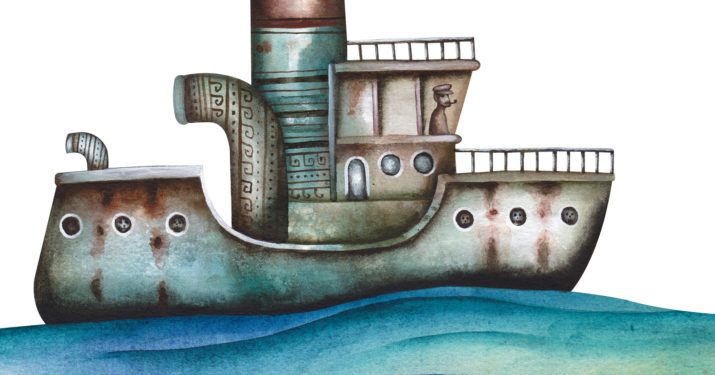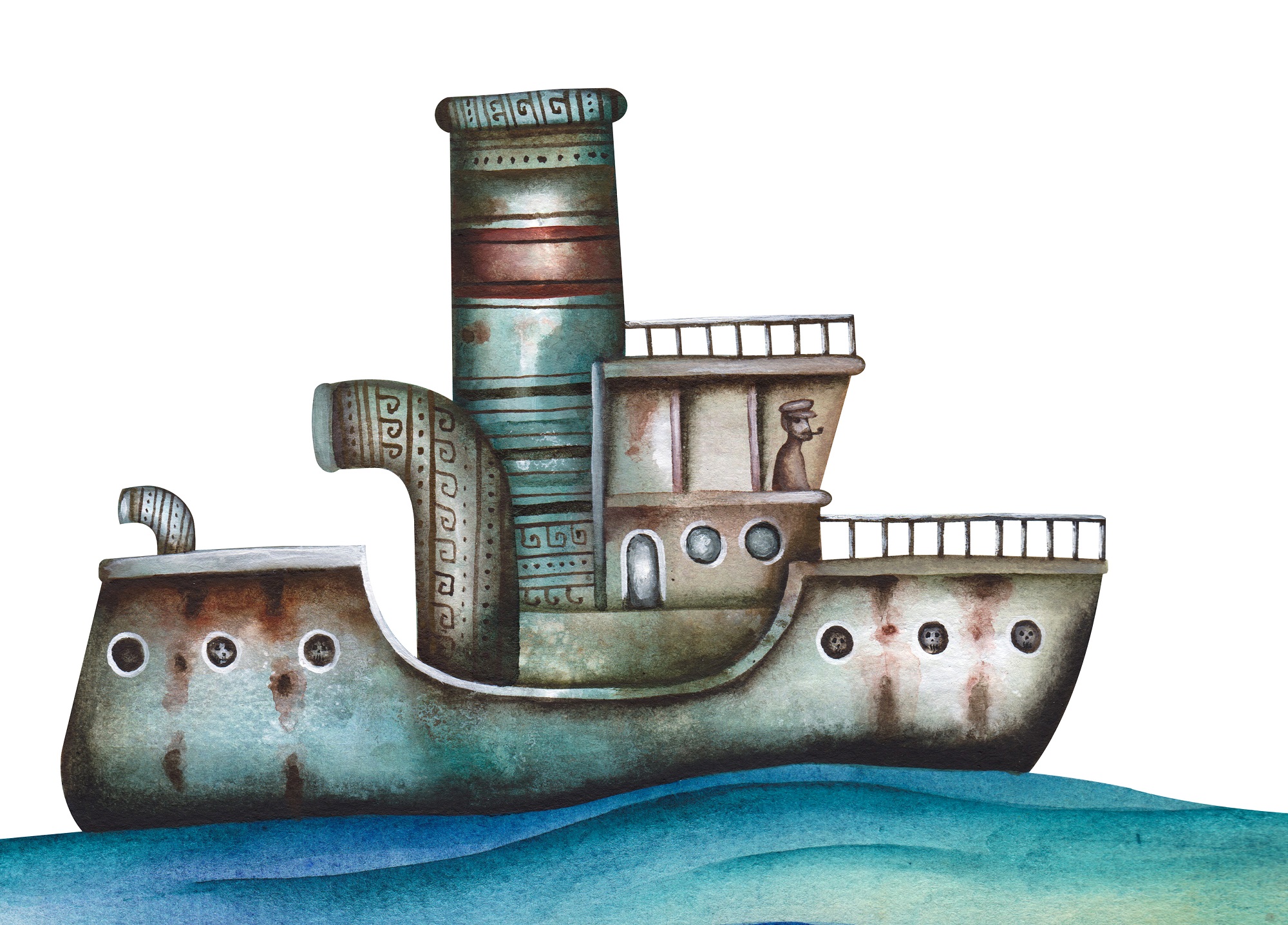

An introduction to our feature Governing the Migration Crisis.
Over the past several years, we have reached a new quality in the global migration crisis: The years 2015 and 2016 were the most turbulent in recent history of refugee movements in Europe and North America. From 2011 to 2015, the number of forcibly displaced people rose from 42.5 to 65.3 million globally. Especially in Europe, the images of people fleeing across the Mediterranean in overloaded and unseaworthy boats have become almost routine. After the massive influx of arrivals in 2015/16 Europe has come to an agreement with Turkey and, more recently, a collaborative approach with Libya, designed to keep what are perceived as “irregular” migrants away from the European continent. Borders have become more and more militarized and the EU’s border protection agency FRONTEX has taken increasingly aggressive steps towards deterring refugees from embarking on their treacherous trip to Europe.
Despite these measures, after some months of relative calm, tens of thousands of individuals have again embarked primarily from Libya and taken the dangerous so-called Mediterranean route to Europe. According to the current estimates of the International Organization for Migration (IOM), over 111,000 migrants have reached Europe by sea on this route until the end of July 2017, the vast majority of them arrived in Italy. And the humanitarian cost is immense: In 2016, UN agencies estimated the death toll among refugees in the Mediterranean Sea to have reached at least 5,000. According to the IOM’s figures, more than 2,300 have died on their journey this year so far; on average 14 persons every day over the past 20 months. The policy of deterrence has evidently not had the intended consequence of dramatically reducing the number of refugees. The reasons for the continued flow of people across borders are manifold: the conflict in Syria surely is the biggest driver. However, the political instability and violence in countries such as Afghanistan, Iraq, Eritrea, Somalia, Nigeria or Iran have significantly contributed to what can reasonably be called a “refugee crisis” on a global scale.
These developments present two fundamental political and policy challenges. The first one relates to the management of movements across borders. Migration management relies on legal frameworks, at the international and state levels, that clearly distinguish between “migrants” (who may be moving for economic or family reasons), “refugees” (who have been identified by UNHCR as needing protection), and “asylum seekers” (who cross an international border to seek protection, but who have not been officially recognized by UNHCR as refugees prior to crossing that border). While these categorizations appear clear-cut in policy, in practice it is quite difficult and time-consuming to determine which category and individual should be placed in. As scholars like Stephen Castles and Anthony Richmond have argued, this difficulty arises from the fact that the motivations of migrants are less of a zero-sum game than a continuum: the need for protection, economic hardship, and the existence of family and kinship ties abroad often combine to influence the decision to move and the destination of the move. Additionally, restrictive immigration and refugee policies have made border crossing through official channels extremely difficult for all but the world’s most privileged, like citizens of OECD states. Absent legal means of entering other countries, citizens of less privileged countries who are seeking refuge from political, economic, and environmental hardships are increasingly forced to cross borders in clandestine ways, often with the help of smugger operations. In the eyes of states and the media, the use of clandestine paths of entry makes all migrants caught up in the current crisis suspect, raising the spectre in public discourse of “illegal” economic immigrants jumping cues under the guise of persons in need of protection. State efforts to compress a complex migration reality into oversimplified policy categories – (“illegal”) economic immigrants, refugees, etc.) takes time, turning the issue of how to treat new arrivals in the meantime into a pressing domestic issue for countries of first arrival and countries of eventual settlement. Over the past two years, Canada’s refugee resettlement efforts have tripled, putting the refugee accommodation and integration system to the test. Germany, Italy, the Netherlands, Sweden, and Turkey are all involved in accommodation of multiple times higher numbers of migrants. Migration settlement systems on the ground are regularly not prepared to deal with the massive influx of refugees. There are the short-term challenges involved in refugee settlement such as processing asylum claims, addressing the traumas frequently associated with having to flee one’s home country, or housing migrants in cities that often do not have the capacity to do so at such a scale. In addition, there are the challenging long-term tasks of including those recognized as refugees or awarded long-term remain to leave into the fabric of society. Language training as well as the inclusion into the educational system and the labour market requires a sustained and resource-intensive commitment on behalf of the host country.
In Europe, the task of developing an effective policy response is also made complicated by the EU’s system of multi-level governance. The Common European Asylum System (CEAS) was introduced in 1999 in order to harmonize asylum processes, guarantee similar standards for protecting and treating refugees, and establish a common system that would allow for cooperation between member states. In an attempt to avoid asylum seekers moving from one country to another “asylum shopping”) the EU established a single system. The so-called Dublin Agreement stipulates that refugees need to register, be fingerprinted, and claim asylum in the first EU member states they land in. However, as a consequence of the overwhelming amount of refugees arriving recently and the inability of the EU to establish a binding distribution scheme for refugees across all member states (vigorously opposed in particular by countries in Central and Eastern Europe), the Dublin system proved ineffective over the past years. Only a small fraction of the promised 160,000 refugees have been resettled from the main destination countries such as Greece, Italy, or Spain. As a result, these countries are left without the proper support or solidarity from other EU member states.
The second major challenge is a moral and ethical one. The growing demand for admission to rich states of the Global North, which has been caused in no small part by decades of increasingly restrictive immigration and refugee policies, and growing inequality on a global scale is an issues that cannot simply be solved by closing borders even more tightly. Europe is a case in point: The EU Charter of Fundamental Rights commits all member states to the Right to Asylum (Article 18) and the EU portrays itself as vitally devoted to the protection of human rights. Yet, by protecting its external borders more aggressively, severely limiting humanitarian assistance in the Mediterranean Sea, and preventing refugees to reach the continent, European democracies threaten to undermine their own constitutive values.
Domestic politics is critical in determining what approach these countries take to governing refugees. In this respect, we have seen two opposing trends across Europe: On the one hand, civil society has demonstrated a great degree of compassion with the plight of refugees, organizing local welcome committees and, in the Canadian case, even putting pressure on the government to accept more refugees from Syria as a fundamental humanitarian commitment of the country. On the other hand, the populist Right has exploited the influx of so many refugees for their political mobilization. Across the continent, we witness the spread of anti-immigrant sentiments in electoral politics on the far right but also among mainstream parties. The solidarity with refugees and irregular migrants proves fragile and fundamentally dependent on receptive political authorities.
In this issue of EuropeNow, members of the Immigration Research Network within the Council for European Studies draw on their recent scholarship to shed light on different angles of the current refugee crisis. Irial Glynn puts the Mediterranean refugee crisis into historic perspective by discussing how current approaches build on previous experiences with large flows of refugees in the twentieth century, and by including other regions and states around the world for a more accurate and complete picture. Elif Cetin’s article focuses on the EU’s migration policy and contributes to the current debates of the instruments that the EU and its Member States have at their disposal to address and control the refugee and asylum-seeker challenge effectively. The article also highlights the shortcomings in addressing the issue at the European level and points to how the EU might embark on a more effective, sustainable course. The next two contributions focus on case studies. Antonio Sorge sheds light on how the political fight over refugees plays out in Mineo, a Sicilian town that is home to Italy’s largest refugee processing center, but also a hub of support for Alba Siciliana, a Euro-sceptic and anti-immigration movement openly opposed to the political elite and global capital domination. Stefan Wallaschek completes the research aspect of this issue with a reflection on how the German public has reacted to the significant influx of refugees and what forms of solidarity citizens have mobilized in practice. His article further takes a look at the German media to highlight how solidarity has been framed and argues that solidarity needs to “be actively created.” Lastly, in an interview conducted by Sakeef Karim, Professor Carla Santos explains how Europe and the New World continue to intersect, due to both contemporary migratory processes and the echoes of the past.
The curated art show “In Between and Far Above” complements the research presented in this issue. Artists Kader Attia and Jason Noushin have lived in-between identities all their lives but have emerged with incredible wealth of knowledge and culture that turns the focus of the reader and viewer to the cultural capital of immigration.
Poetry
– Excerpt from Magnetic Point by Ryszard Krynicki, translated from the Polish by Clare Cavanagh
Fiction
– Excerpt from Go, Went, Gone by Jenny Erpenbeck, translated from the German by Susan Bernofsky
– Excerpt from Belladonna by Daša Drndic, translated from the Croatian by Celia Hawkesworth
– Excerpt from The Endless Summer by Madame Nielsen, translated from the Danish by Gaye Kynoch
Nonfiction
– “New York to Manchuria” by Christopher Impiglia
Research
– “Comparing Europe’s Recent Reaction to Boat Refugees Across Time and Space” by Irial Glynn
– “What Prospects for Change to Achieve a Sustainable EU Migration Policy?” by Elif Çetin
Commentary
– “Narratives of Belonging: Polish Immigrants in the UK After Brexit” by Aga Kulesa
Reviews
– What is a Refugee? reviewed by Alexander Sager
– Migration, Memory, and Diversity: Germany from 1945 to the Present, reviewed by Lauren Stokes
– The Young Victims of the Nazi Regime Migration, the Holocaust and Postwar Displacement, reviewed by Paula Fass
– Familiar Stranger: A Life Between Two Islands, reviewed by Graeme Turner
– EurAfrican Borders and Migration Management Political Cultures, Contested Spaces, and Ordinary Lives, reviewed by Stephanie Maher
– Seawomen of Iceland: Survival on the Edge, reviewed by Jane Nadel-Klein
Interviews
– “Mobilities, Values, and Citizenship: An Interview with Carla Santos” by Sakeef Karim
Visual Art
– In Between and Far Above, an art series curated by Nicole Shea
Nicole Shea is the Director of the Council for European Studies and Executive Editor of EuropeNow.
Jennifer Elrick is an Assistant Professor in the Department of Sociology at McGill University in Montreal, Canada. She received her PhD in Sociology from the University of Toronto. Her work focuses on processes of categorization and classification that states engage in vis-a-vis minority and immigrant populations (e.g. in immigration policies, official statistics), and how the categorizations and classifications affect the material and symbolic inclusion/exclusion of these population.
Oliver Schmidtke is a Professor in the Departments of Political Science and History at the University of Victoria. He also holds the Jean Monnet Chair in European History and Politics and serves as the director of the Centre for Global Studies in Victoria. He received his PhD from the European University Institute in Florence and has been a JF Kennedy Fellow at Harvard University, a visiting scholar at Humboldt University Berlin, a F. Braudel Senior Fellow at the European University Institute, and a Marie Curie Fellow at Hamburg University. His research interests are in the fields of the political sociology and politics of migration, citizenship, nationalism, and the governance of migration and integration in Europe and Canada.
Photo: Ship, Eugene Ivanov | Shutterstock
Published on October 2, 2017.




